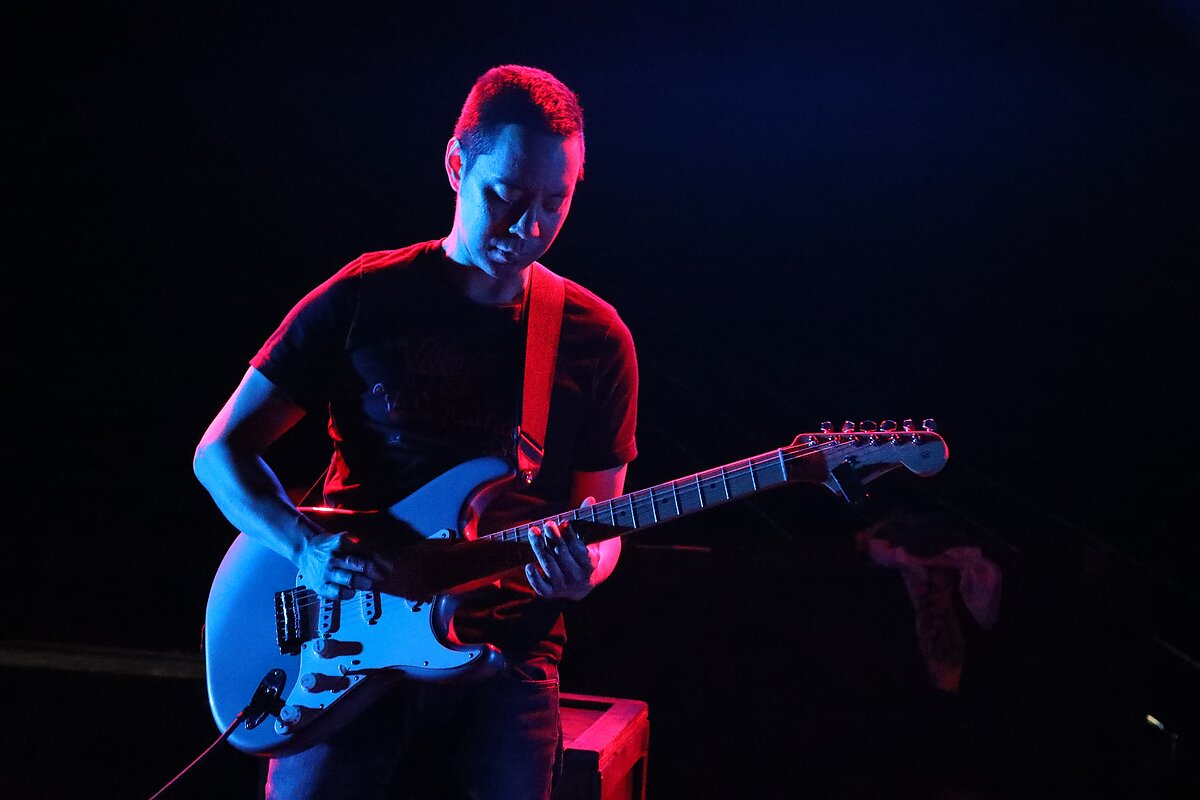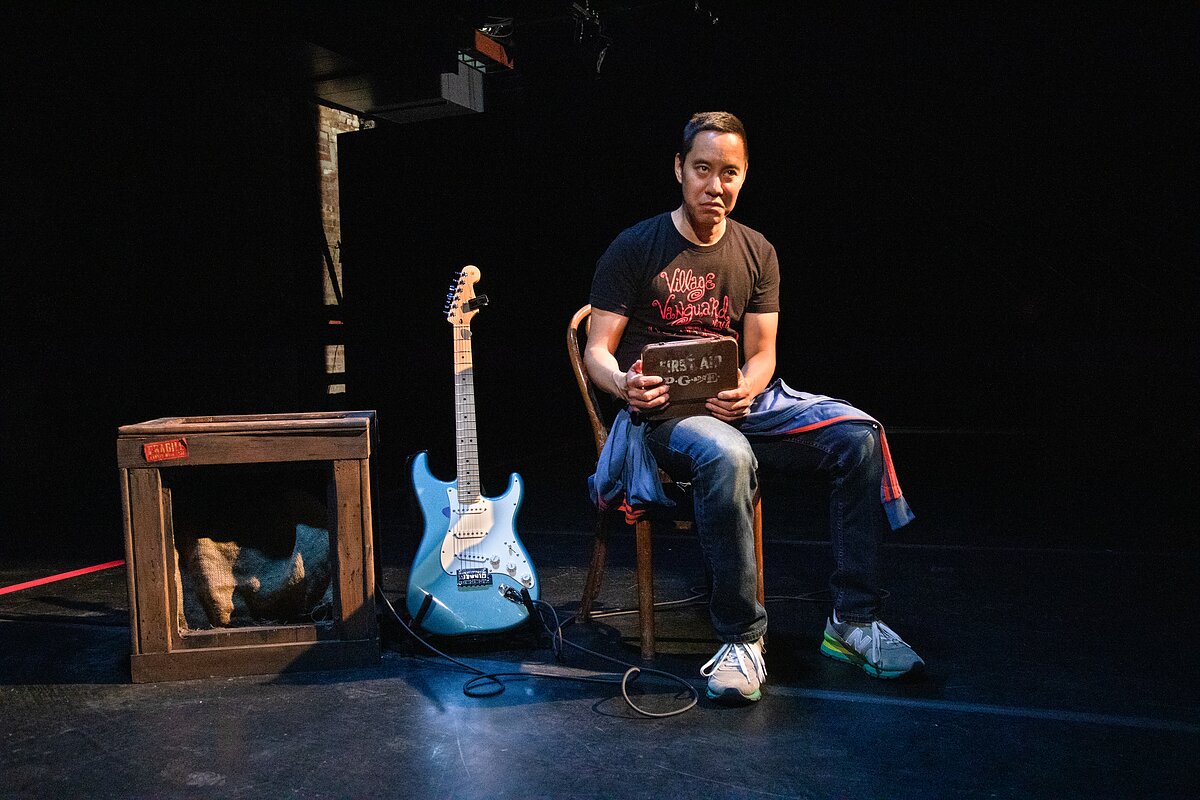Living the Blues in Wesley Du’s “Hong Kong Mississippi”
There’s a scarcity of theater that explores Black-Asian relationships in the American South. Among the few that exist is the 1925 Mississippi-set Gong Lum’s Legacy by Charles L. White, which is a love story between a Chinese man and a Black woman.
Building on that scant legacy is Wesley Du’s current production, Hong Kong Mississippi, now playing at La MaMa through May 14th. The one-man production follows a surrogate father-son duo—an old Black musician and a Chinese American boy living in the South. Starting in 1991, the play is told through the eyes of said boy, Pinky (played by Du), who begins as an 11-year-old and grows into a 26-year-old man.
Du, who rotates through the play’s 16 characters, once again tackles the classic trope of a Chinese American youth disillusioned with his filial piety. Du’s 2014 directorial and screenwriting short film, Dumpling touched on similar themes, telling the story of a queer Chinese American boy rejecting his boxer father’s restrictive masculinity.
When we meet Pinky, he is a young boy who finds that “high-pitched Chinese music” and classical music do not appeal to him. Instead, his ears and heart are open to the blues, which emanates from the next-door Chickie Wah Wah Club (the name of a real and legendary nightclub in New Orleans).
Pinky is drawn to one of the venue’s performers in particular: a Black bluesman named Cannonball. However, Cannonball’s xenophobia stemming from the loss of his son in the Vietnam War drives him to throw bigoted barbs at Pinky. Pinky is also wounded by emerging family secrets kept by his emotionally fraught single mother (a portrayal Du navigates with humor and harsh humanity), who would flash her Cesarean scar to guilt trip him.
Du sculpts Cannonball with a blustery and blistering timbre, never melting him down to sentimentality. The play finds its beating heart when Cannonball finally trains Pinky in the blues (while sternly reminding him that this music is indebted to Black slaves) and produces a blue and white Fender Stratocaster. Though Cannonball never dissolves his racial barbs, they evolve into coarse endearments. The two find solidarity in understanding that the white music world excludes them both.
Within its 80-minute runtime, Du’s play is in need of more actual blues, the outlet for Pinky’s frustrations as well as the bridge between him and Cannonball. Still, Du has adroit guidance under director Craig Belknap when it comes to the narrator’s interaction with the stage objects. Designed by Michael C. Smith, the set features an empty chair, kitchen utensils, and the aforementioned guitar among an economical arrangement of crates.
A little more uncertain is Du’s ability to deftly unpack the thorny intersections of race, gender, class, and disability through the character of Pinky. To his credit, Du seems to understand that the Chinese women in his story have a complicated relationship with sexuality and the surrounding cultural and social attitudes that shape them. However, there are a few moments where Du’s intentions with Pinky as an unreliable narrator feel muddled.
For example, there’s an underbaked but still fascinating narrative in Eva, a Chinese neighbor and love interest who undergoes an offstage coming-of-age that Pinky seems aware that he doesn’t grasp. She’s first represented as a cloth dangling from Du’s hand and the sound of Chinese romantic strings serves as her leitmotif (even if Pinky claims he doesn’t connect to Chinese music, he is latently influenced).
Eva is also the subject of one particular scene that gave me pause: she escapes a Black teenager with dwarfism named Booger attempting to rape her (a depiction that borders on excessively cruel and stereotyping). It’s an uncomfortable, troubling scene that seems to be intent on illustrating toxic masculinity and yellow fever embroiled in men of color—instead of contemplating Eva’s trauma, Pinky misguidedly fixates on losing a shot at love.
Du’s script also invokes a few head-scratching choices. Consider that neither Cannonball or Pinky connect to classical music and that Pinky lovingly namedrops Asian and Black artists throughout the play. Under these circumstances, it’s odd that the play’s final artist namedrop is Beethoven, neither a Black nor Asian artist and a far cry from both Cannonball and Pinky’s prior professed music interests.
The show grows thirsty for Cannonball and Pinky’s dynamic, especially when Cannonball fades out of the third chapter before resurfacing for the finale. So few are the scenes that unpack their relationship that I found myself longing for longer and more substantial material that could unravel their mercurial bond. Such promises, however, are plucked within the guitar strings.
—Caroline Cao is a writer based in New York City.

